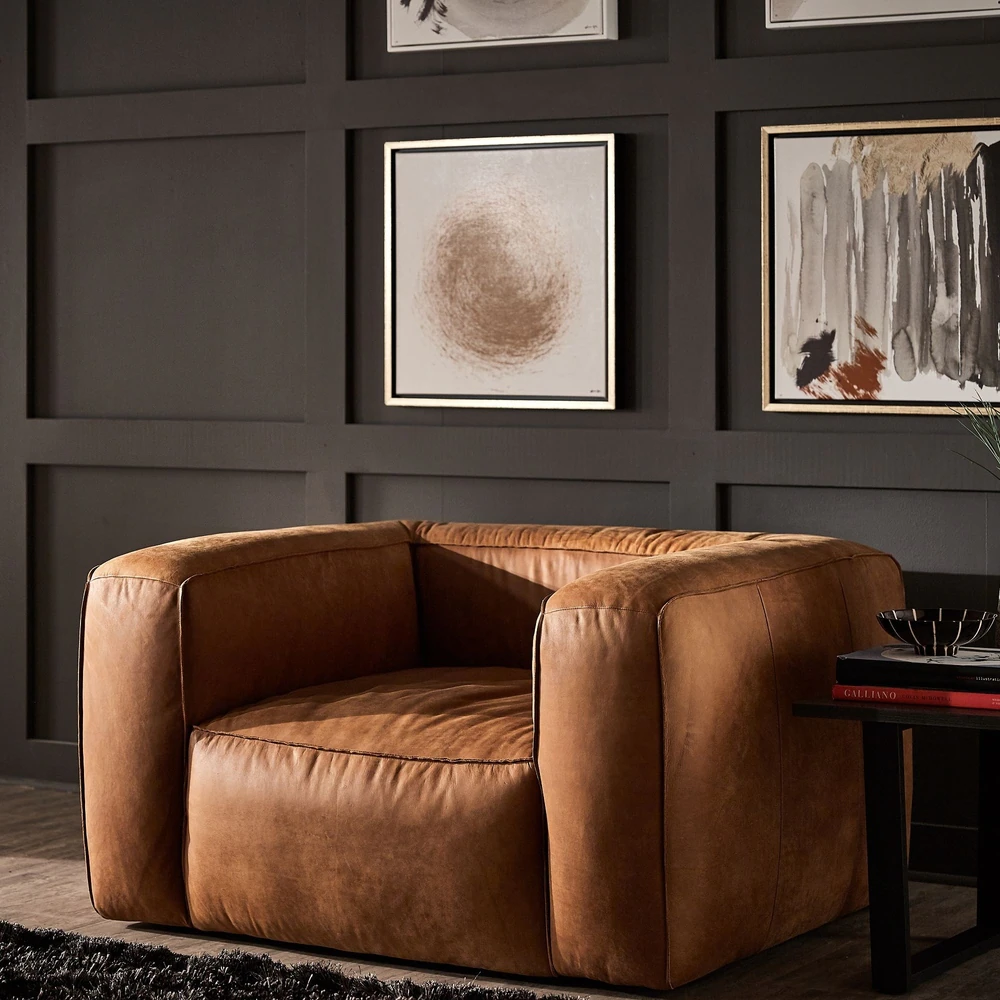Leather is a common material for furniture design, particularly chairs. It is a versatile and long-lasting material that provides a refined and beautiful touch to any space. The texture, feel and appearance of leather are determined by the animal from which it is produced, the tanning process and the finishing processes employed. In this post, we will look at the various varieties of leather chair materials, their qualities and the benefits and drawbacks of each.

1. Full-grain leather
Full-grain leather is the most expensive and finest leather available. It is manufactured from the strongest and most durable component of the animal’s hide, the top layer. Full-grain leather preserves the inherent texture, patterns and flaws of the animal’s skin, giving it a distinct and realistic appearance.
Pros
Full-grain leather is robust, long-lasting and resistant to wear and tear. It develops a lovely patina over time, adding to its character and charm. It is also water-resistant and simple to clean, making it an excellent choice for daily-use chairs.
Cons
Full-grain leather is the most expensive sort of leather, and its natural texture and marks may not appeal to everyone. It may also be less pleasant to sit on than other varieties of leather, particularly if not adequately padded.
2. Top-grain leather
The second layer of the animal’s skin, directly below the full-grain layer, is used to make top-grain leather. It is thinner and softer than full-grain leather and is commonly used in high-end furniture.
Pros
Top-grain leather is less expensive than full-grain leather, while maintaining a premium feel and appearance. It’s also more constant in texture and color than full-grain leather, making it easier to coordinate with other pieces of furniture and decor.
Cons
Top-grain leather is less durable than full-grain leather and can crack and peel if not properly cared for. It may also fade with time, particularly if exposed to direct sunshine.
3. Corrected-grain leather
Corrected-grain leather is created by sanding and buffing the lowest layers of an animal’s hide to erase flaws. To give the surface a uniform appearance, it is then stamped with a grain pattern.
Pros
Corrected-grain leather is less expensive than full-grain or top-grain leather and is frequently used in mass-produced furniture. It is also more stain and spill resistant than other varieties of leather and is simple to clean.
Cons
Corrected-grain leather lacks full-grain leather’s natural texture and character and may feel less sumptuous to the touch. It is also less resilient than other varieties of leather and is prone to cracking and peeling over time.
4. Bonded leather
Bonded leather is created by grinding fragments of leather into a pulp and then bonding them together with a polyurethane coating. It is the least expensive sort of leather available and is commonly used in low-end furniture.
Pros
Bonded leather is the least expensive sort of leather and may be manufactured to look like more expensive leathers. It is also simple to clean and maintain, making it an ideal choice for families with children or pets.
Cons
Bonded leather is less resilient and long-lasting than other forms of leather, and it may split or peel after only a few years. It also lacks the natural texture and feel of genuine leather, making it less pleasant to sit on.
Conclusion
Finally, the sort of leather used for chairs can significantly affect their beauty, longevity and comfort. Full-grain leather is the most sumptuous and long-lasting sort of leather, whereas bonded leather is the least expensive but also the least long-lasting. Top-grain leather and corrected-grain leather provide a cost-quality balance and are commonly used in high-end and mass-produced furniture, respectively. While selecting a leather chair, keep your budget, design choices and amount of use and maintenance in mind.